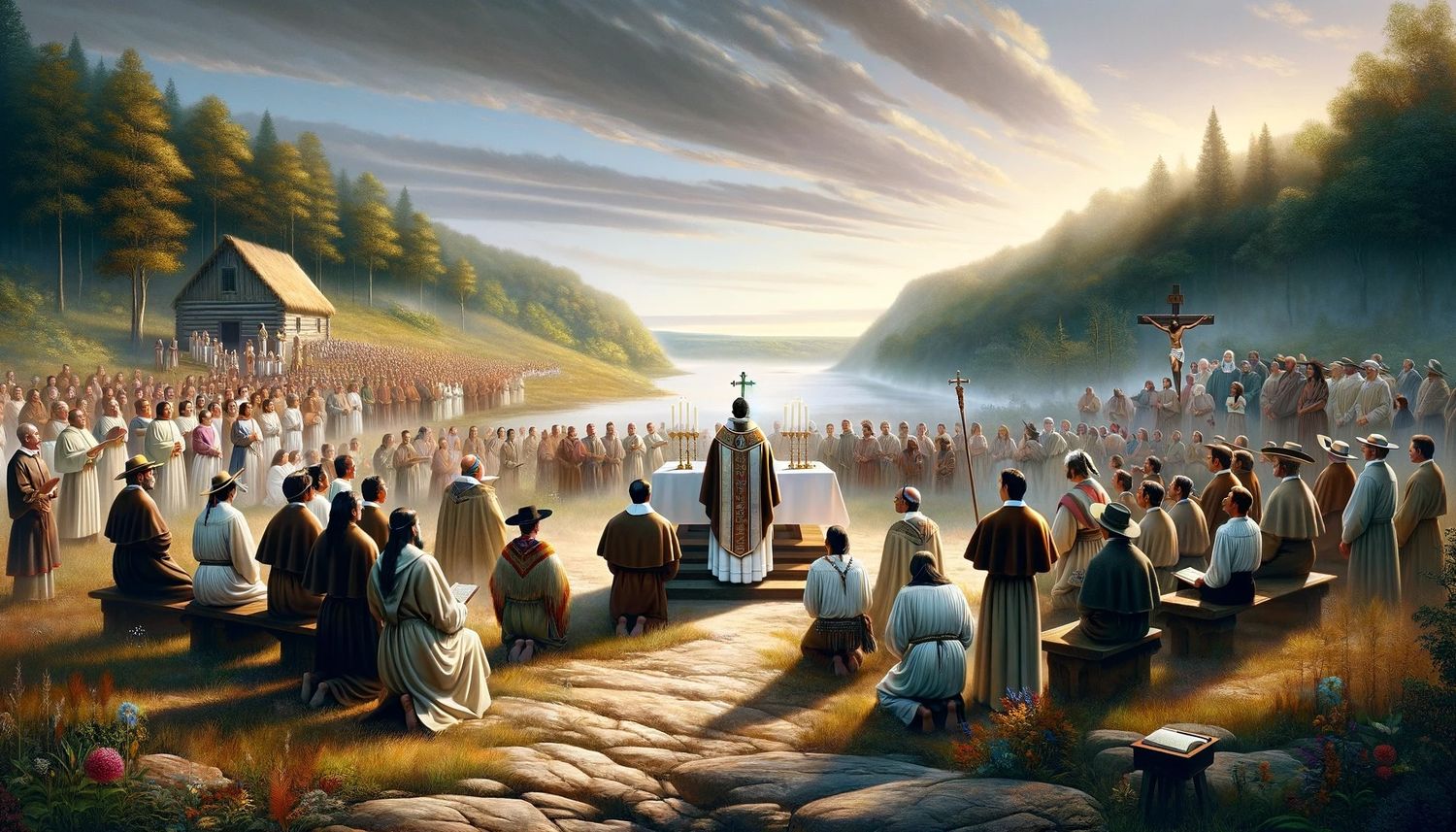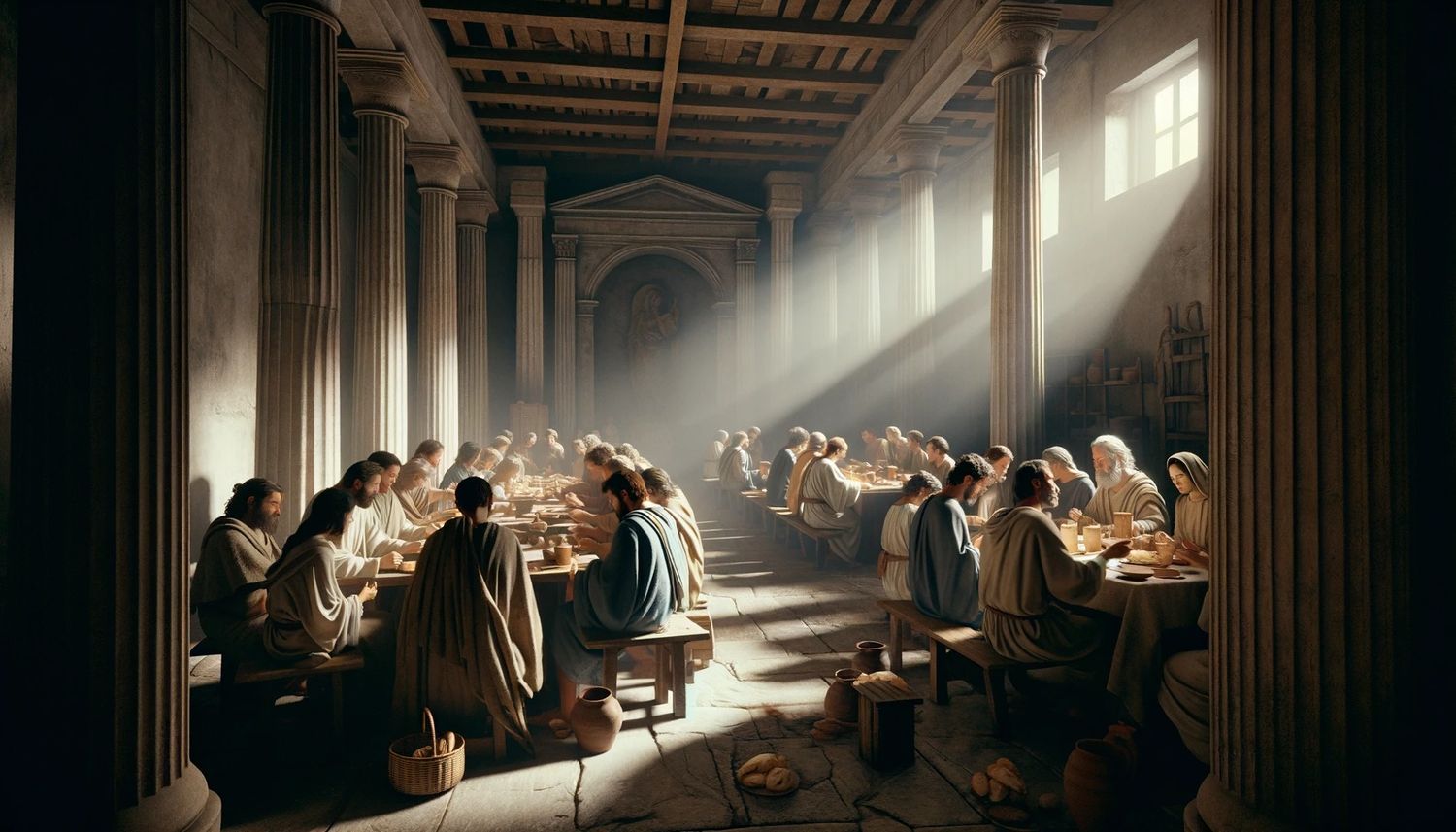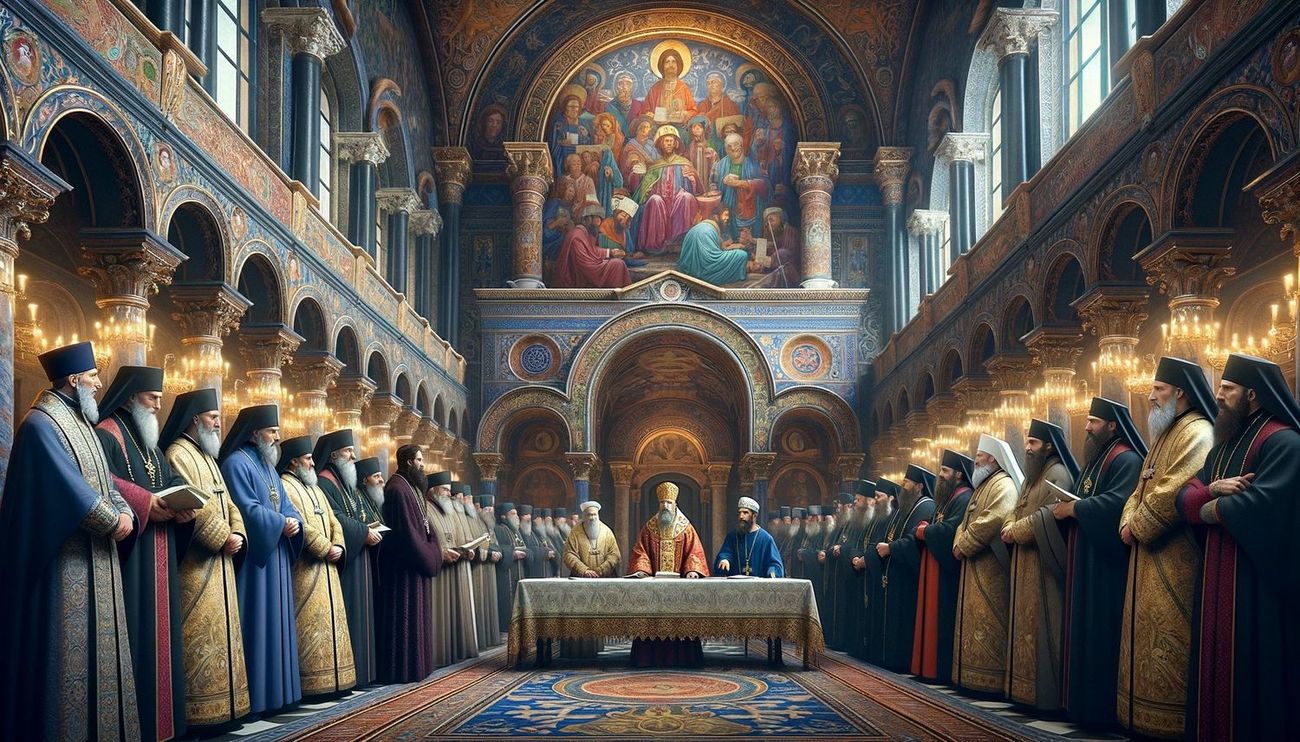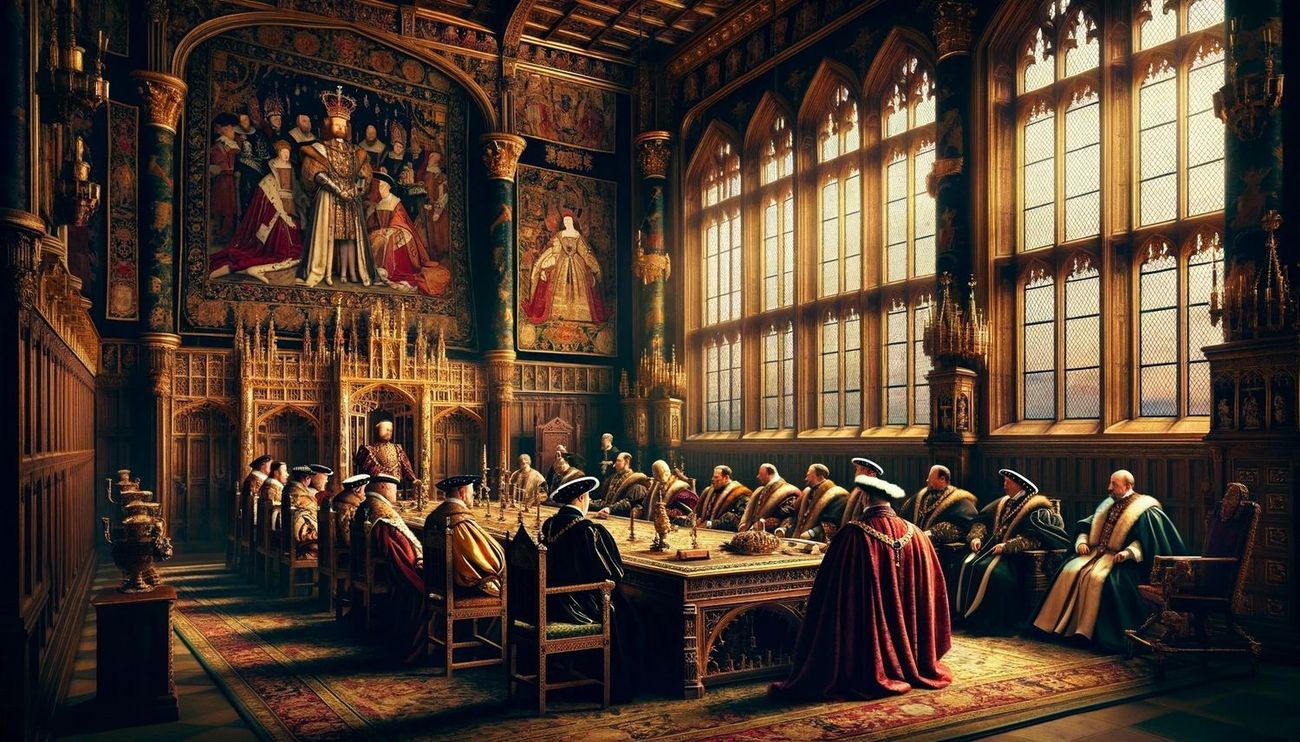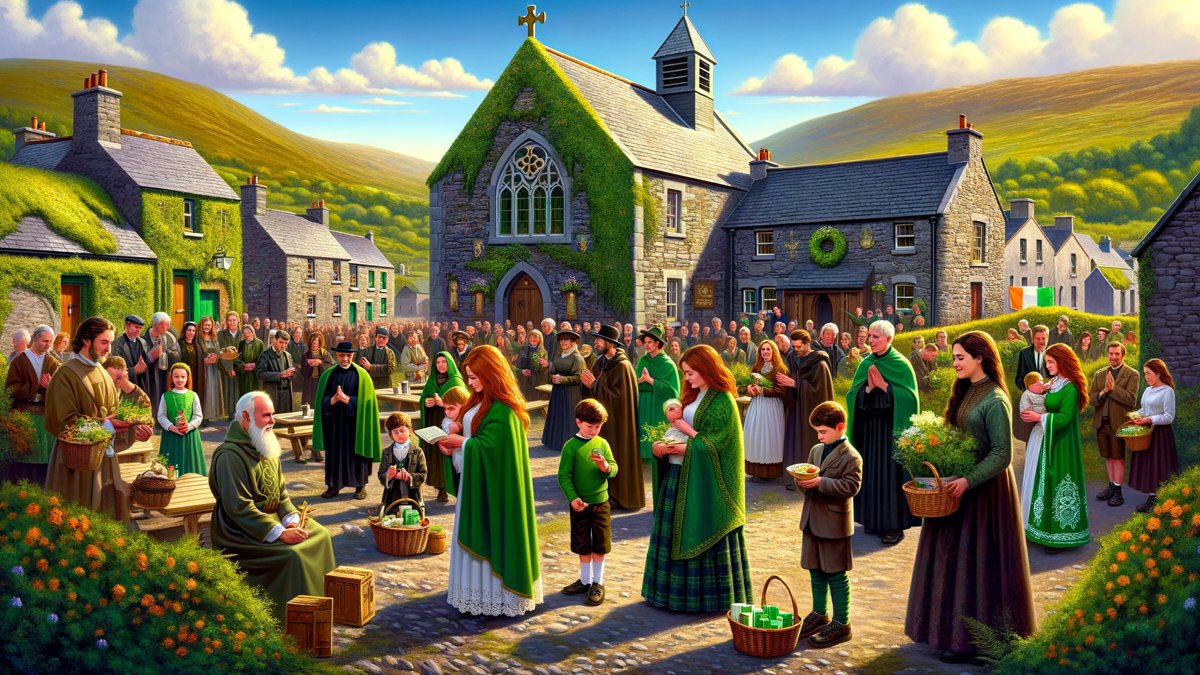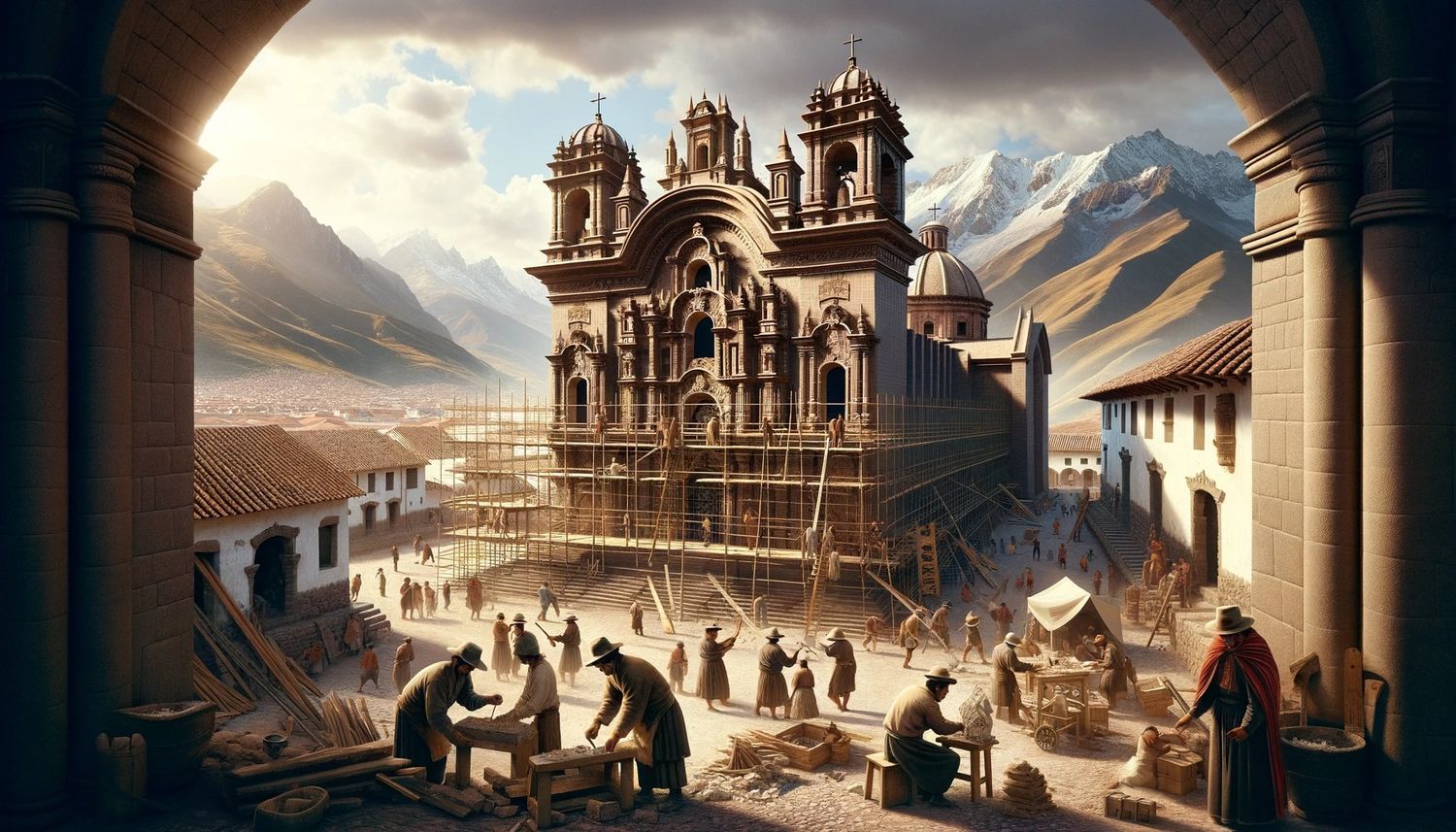Home>Theology and Spirituality>When Did Catholicism Come To Scotland


Theology and Spirituality
When Did Catholicism Come To Scotland
Published: February 17, 2024
Jason DeRose, Managing Editor at Christian.net, uses his expertise in religion and journalism to deepen understanding of faith's societal impacts. His editorial leadership, coupled with a strong academic background, enriches the platform’s diverse content, earning him recognition in both journalism and religious circles.
Discover the history of Catholicism in Scotland and its impact on theology and spirituality. Learn about the arrival and development of the faith in this fascinating region.
(Many of the links in this article redirect to a specific reviewed product. Your purchase of these products through affiliate links helps to generate commission for Christian.net, at no extra cost. Learn more)
Table of Contents
Introduction
The history of Catholicism in Scotland is a rich tapestry woven with threads of faith, tradition, and resilience. From its early beginnings to its enduring influence, the story of Catholicism in Scotland is a testament to the enduring power of spirituality and community. As we delve into the origins and evolution of Catholicism in this ancient land, we embark on a journey that spans centuries and encompasses a myriad of cultural, social, and religious dynamics.
Scotland, with its rugged landscapes and storied past, has been a land of spiritual significance since ancient times. The arrival of Christianity in Scotland marked a pivotal moment in its history, shaping the beliefs and practices of its people for generations to come. The journey of Catholicism in Scotland is a testament to the enduring power of faith and the profound impact of religious traditions on the fabric of society.
As we explore the early Christian influences in Scotland and the arrival of Catholicism on its shores, we will uncover the profound ways in which this faith has shaped the hearts and minds of the Scottish people. From the spread and influence of Catholicism to the challenges and changes it has weathered over the centuries, the story of Catholicism in Scotland is a compelling narrative of faith, resilience, and cultural heritage.
Join us on this exploration of the historical and spiritual landscape of Scotland, where the roots of Catholicism run deep and continue to thrive amidst the winds of change and the passage of time. Let us embark on a journey through the annals of history, where the echoes of ancient prayers and the enduring legacy of faith resonate across the centuries, shaping the identity of a nation and the souls of its people.
Read more: When Did Catholicism Start In Spain
Early Christian Influences in Scotland
The early Christian influences in Scotland trace back to the arrival of Christianity in the region during the Roman era. The exact timeline of the introduction of Christianity to Scotland is shrouded in the mists of time, but it is believed to have taken root in the early centuries of the first millennium. The earliest Christian influences in Scotland can be attributed to the efforts of missionaries and the gradual spread of the faith among the Picts, Gaels, and other indigenous peoples.
One of the most significant figures in the early propagation of Christianity in Scotland was Saint Ninian, who is often referred to as the "Apostle to the Southern Picts." Saint Ninian established a church at Whithorn in Galloway, which became a center for Christian worship and evangelization. His missionary endeavors contributed to the gradual Christianization of the Pictish kingdoms in the southern regions of present-day Scotland.
Another pivotal figure in the early Christianization of Scotland was Saint Columba, also known as Columba of Iona. Born in Ireland, Saint Columba played a crucial role in spreading Christianity in Scotland through his establishment of the monastery on the island of Iona. The monastery became a beacon of learning, spirituality, and missionary work, exerting a profound influence on the religious landscape of Scotland.
The arrival of Christianity in Scotland also coincided with the emergence of monastic communities, which served as centers of religious instruction, manuscript production, and charitable activities. These monastic settlements, such as those at Iona, Lindisfarne, and Dunkeld, played a vital role in nurturing the early Christian faith and preserving knowledge and culture during a tumultuous era in Scottish history.
The early Christian influences in Scotland laid the foundation for the enduring presence of Catholicism in the region. The fusion of indigenous traditions with Christian beliefs, the establishment of monastic institutions, and the tireless efforts of missionaries all contributed to the gradual integration of Christianity into the fabric of Scottish society.
As we reflect on the early Christian influences in Scotland, we are reminded of the resilience and adaptability of the Christian faith as it took root in a land characterized by diverse cultures and ancient traditions. The seeds sown by early Christian missionaries and communities would blossom into a rich tapestry of religious heritage that continues to shape the spiritual identity of Scotland to this day.
Arrival of Catholicism in Scotland
The arrival of Catholicism in Scotland marked a significant turning point in the religious landscape of the region. While the exact date of its introduction is a subject of historical debate, it is widely acknowledged that Catholicism took root in Scotland during the early medieval period. The conversion of the Picts and the Gaels to Catholicism, facilitated by missionaries and monastic communities, played a pivotal role in the establishment of the faith in Scotland.
The influence of Catholicism in Scotland can be traced back to the missionary endeavors of figures such as Saint Ninian and Saint Columba. Saint Ninian, often regarded as the first major missionary in Scotland, established a church at Whithorn in the 5th century, laying the groundwork for the spread of Catholicism among the Picts in the southern regions. Saint Columba, hailing from Ireland, arrived in Scotland and founded the monastery on the island of Iona in the 6th century. The monastery became a center of Christian learning and evangelization, contributing to the widespread acceptance of Catholicism among the Gaels and beyond.
The establishment of monastic communities, such as those at Iona and Lindisfarne, served as hubs for the propagation of Catholicism and the preservation of religious texts and traditions. These monasteries played a crucial role in solidifying the presence of Catholicism in Scotland and nurturing a generation of devout believers and scholars.
The arrival of Catholicism in Scotland also coincided with the emergence of ecclesiastical structures and the establishment of dioceses, further cementing the institutional framework of the faith in the region. The influence of Catholicism extended beyond religious practices, permeating various aspects of Scottish society, including art, education, and governance.
The enduring legacy of the arrival of Catholicism in Scotland is evident in the architectural marvels of medieval cathedrals and abbeys, the rich tapestry of religious art and iconography, and the enduring traditions and rituals that continue to shape the spiritual identity of the Scottish people.
As Catholicism took root in the fertile soil of Scottish culture and history, it intertwined with the fabric of society, leaving an indelible mark on the hearts and minds of generations to come. The arrival of Catholicism in Scotland heralded a new chapter in the spiritual journey of the nation, laying the groundwork for a profound and enduring relationship between faith and community.
Spread and Influence of Catholicism in Scotland
The spread and influence of Catholicism in Scotland unfolded as a profound and enduring journey that left an indelible mark on the spiritual, cultural, and social landscape of the nation. Following its arrival, Catholicism permeated the fabric of Scottish society, shaping the beliefs, traditions, and institutions that would define the nation for centuries to come.
The missionary zeal of early Christian figures, such as Saint Ninian and Saint Columba, played a pivotal role in the spread of Catholicism across Scotland. Their efforts, coupled with the establishment of monastic communities, facilitated the gradual embrace of the faith by diverse ethnic groups, including the Picts, Gaels, and Britons. The monasteries, serving as centers of learning and spiritual guidance, became beacons of Catholic influence, nurturing a generation of devout believers and scholars.
The establishment of dioceses and the appointment of bishops further solidified the institutional framework of Catholicism in Scotland, providing a structured hierarchy that oversaw the spiritual needs of the faithful. The influence of Catholicism extended beyond religious practices, permeating various aspects of Scottish society. The faith inspired the creation of awe-inspiring cathedrals, monasteries, and religious art, reflecting the deep spiritual devotion and artistic expression of the Scottish people.
The influence of Catholicism also extended to education, with monastic institutions serving as centers of learning and scholarship. The preservation and production of religious texts, manuscripts, and chronicles contributed to the intellectual and cultural enrichment of Scottish society, fostering a legacy of knowledge and literacy that endured through the ages.
The enduring influence of Catholicism in Scotland is evident in the enduring traditions, rituals, and celebrations that continue to shape the spiritual identity of the nation. From the observance of religious festivals to the veneration of saints and martyrs, the legacy of Catholicism is woven into the tapestry of Scottish culture, fostering a sense of continuity and communal identity.
As Catholicism spread and took root in the hearts and minds of the Scottish people, it became an integral part of their collective consciousness, providing solace, guidance, and a sense of belonging. The enduring influence of Catholicism in Scotland is a testament to the resilience of faith and the profound impact of religious traditions on the evolution of a nation.
The spread and influence of Catholicism in Scotland is a testament to the enduring power of spirituality and community, shaping the beliefs and practices of its people for generations to come.
Challenges and Changes in Catholicism in Scotland
The history of Catholicism in Scotland is marked by a series of challenges and changes that have shaped the trajectory of the faith within the nation. From political upheavals to religious reforms, the journey of Catholicism in Scotland has been characterized by resilience in the face of adversity and adaptation in response to evolving social and cultural dynamics.
One of the most significant challenges faced by Catholicism in Scotland was the Reformation, a period of religious and political turmoil that swept across Europe in the 16th century. The Reformation, spearheaded by figures such as John Knox, led to the establishment of Protestantism as the dominant form of Christianity in Scotland. The subsequent suppression of Catholic practices and the persecution of Catholic clergy posed formidable obstacles to the preservation and propagation of the faith.
The impact of the Reformation reverberated throughout Scottish society, resulting in the dismantling of monastic institutions, the confiscation of church lands, and the imposition of new religious doctrines. Catholicism faced a period of marginalization and persecution, forcing the faithful to practice their beliefs in clandestine settings and endure hardships in defense of their religious convictions.
Despite these challenges, Catholicism in Scotland endured, albeit in a transformed state. The resilience of the Catholic community, coupled with the gradual relaxation of anti-Catholic measures, allowed the faith to regain a foothold within Scottish society. The establishment of a network of clandestine chapels and the perseverance of the Catholic faithful contributed to the preservation of the faith during tumultuous times.
In the centuries that followed, Catholicism in Scotland witnessed a gradual resurgence, marked by the restoration of formal ecclesiastical structures and the reemergence of public worship. The appointment of new bishops and the revitalization of Catholic communities signaled a period of renewal and growth for the faith.
The challenges and changes experienced by Catholicism in Scotland have contributed to the evolution of the faith within the nation. The enduring legacy of resilience, adaptation, and perseverance has shaped the contemporary landscape of Catholicism in Scotland, fostering a sense of continuity and spiritual vitality within the hearts of the faithful.
The story of Catholicism in Scotland is a testament to the enduring power of faith in the face of adversity and the capacity for transformation in response to historical upheavals. The challenges and changes that have shaped the journey of Catholicism in Scotland have imbued the faith with a profound sense of resilience and adaptability, ensuring its enduring presence within the nation's spiritual tapestry.
Conclusion
The journey of Catholicism in Scotland is a testament to the enduring power of faith, resilience, and cultural heritage. From its early Christian influences to its enduring presence in the face of historical challenges, Catholicism has woven itself into the fabric of Scottish society, shaping the spiritual identity of the nation for centuries.
The arrival of Catholicism in Scotland, facilitated by the missionary endeavors of figures such as Saint Ninian and Saint Columba, marked a pivotal moment in the religious landscape of the region. The establishment of monastic communities and the spread of ecclesiastical structures solidified the institutional framework of Catholicism, permeating various aspects of Scottish society, including art, education, and governance.
The spread and influence of Catholicism in Scotland fostered a legacy of resilience and adaptability, as the faith weathered the storms of political upheavals and religious reforms. The challenges faced by Catholicism, particularly during the Reformation, tested the resolve of the faithful, leading to a period of persecution and marginalization. However, the enduring spirit of the Catholic community, coupled with the gradual relaxation of anti-Catholic measures, allowed the faith to endure and eventually experience a resurgence.
The story of Catholicism in Scotland is one of transformation and continuity, as the faith evolved in response to historical dynamics while preserving its core traditions and beliefs. The enduring influence of Catholicism is evident in the enduring traditions, rituals, and celebrations that continue to shape the spiritual identity of the nation, fostering a sense of continuity and communal identity.
As we reflect on the journey of Catholicism in Scotland, we are reminded of the profound ways in which faith has shaped the hearts and minds of the Scottish people. The enduring legacy of Catholicism is a testament to the resilience of faith and the profound impact of religious traditions on the evolution of a nation. The story of Catholicism in Scotland is a testament to the enduring power of spirituality and community, shaping the beliefs and practices of its people for generations to come.
